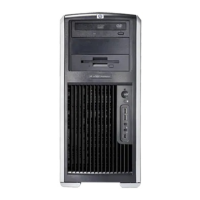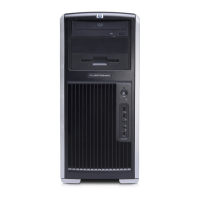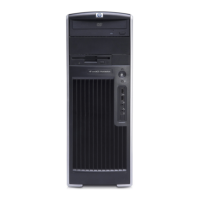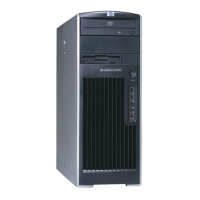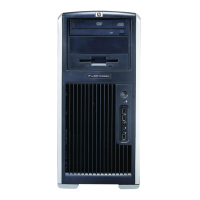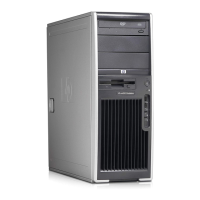Cables and connectors
Cables must be handled with care to avoid damage. Apply only the tension required to seat or unseat
the cables during insertion or removal from the connector. Handle cables by the connector or pull strap
whenever possible. In all cases, avoid bending or twisting the cables, and be sure that the cables are
routed in such a way that they cannot be caught or snagged by parts being removed or replaced.
CAUTION When servicing this workstation, be sure that cables are placed in their proper
location during the reassembly process. Improper cable placement can damage the workstation.
Hard drives
Handle hard drives as delicate, precision components, avoiding all physical shock and vibration. This
guideline applies to failed drives and replacement spares. Keep the following guidelines in mind as well:
●
If a drive must be mailed, place the drive in a bubble-pack mailer or other suitable protective
packaging and label the package “Fragile: Handle With Care.”
●
Do not remove hard drives from the shipping package for storage. Keep hard drives in their
protective packaging until they are actually mounted in the workstation.
●
Avoid dropping drives from any height onto any surface.
●
If you are inserting or removing a hard drive, power off the workstation. Do not remove a hard drive
while the workstation is on.
●
Before handling a drive, be sure that you are discharged of static electricity. While handling a drive,
avoid touching the connector. For more information about preventing electrostatic damage, see
Electrostatic discharge information on page 50.
●
Do not use excessive force when inserting a drive.
●
Avoid exposing a hard drive to liquids, temperature extremes, or products that have magnetic fields
such as monitors or speakers.
Lithium coin cell battery
The battery that comes with the workstation provides power to the real-time clock and has a minimum
lifetime of about three years.
For instructions on battery removal and replacement, see
Battery on page 80.
WARNING! This workstation contains a lithium battery. A risk of fire and chemical burn exists
if the battery is handled improperly. Do not disassemble, crush, puncture, short external contacts,
dispose of in water or fire, or expose it to temperatures higher than 140 degrees F (60 degrees
C).
NOTE Batteries, battery packs, and accumulators should not be disposed of with general
household waste.
ENWW Service considerations 53

